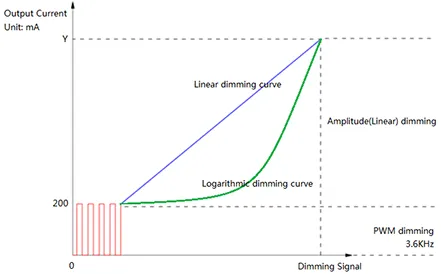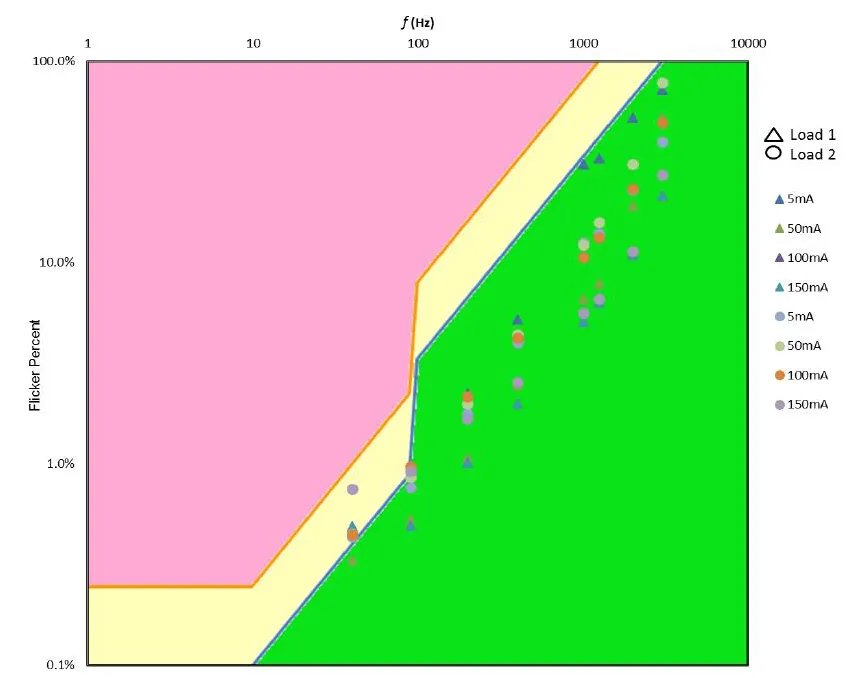How to Solve the LED Flicker Effect?
 Figure 1. Communal Bridge with MOONS' LED drivers, Russia
Figure 1. Communal Bridge with MOONS' LED drivers, Russia LED FLICKER EFFECT INTRODUCTION
There are two types of flickering with lights – visible flicker and invisible flicker. Our eyes can see visible flicker when the light output from a given source rapidly changes. Anything below a frequency of 100 Hz is considered to be visible. Invisible flicker is not consciously perceived by humans, but it can still have biological or even health effects.WHERE DOES FLICKER COME FROM?
To better understand flickering in lights, consider the theatrical effect known as strobe lighting. The flicker effect occurs when light is delivered at certain frequencies, causing the brain to perceive moving objects as if they were in slow motion. Generally, these frequencies are only a few flashes per second, but they are very close to those that cause epilepsy. Unintentional flickering in lighting equipment can be attributed to the fact that our power companies designed electricity to flow using alternating current (AC), rather than direct current (DC). In AC power, the sine waves peaks both positively and negatively. Consequently, it may cause flickering or audible hum when it is in this range.HOW TO SOLVE LED FLICKERING ISSUES?
LED flickering can be tied back to the driver component within the lamp. The essential purpose of the LED driver design is to rely on a simple circuit to control output current, but without altering the frequency, the LED becomes likely to show a visible flicker. However, this can be fixed by using constant current drivers, which remove the peaks of the sine wave. The best way to avoid flicker is to use LED drivers:• Two-stage, high-frequency LED drivers such as MOONS' CP series LED drivers;
• LED drivers that dim using either DC or Constant Current Reduction
• LED drivers that dim using Pulse Amplitude Modulation (PAM) MOONS' uses a hybrid approach to dimming in which it uses the attributes of both PWM and Amplitude Dimming to create a solution that is smoother, deeper, and has a low risk of flicker throughout the dimming range. PWM is used when lower light levels are needed and amplitude dimming is used at higher levels of light output. Figure 5 shows the detail of this dimming strategy.
 Figure 2. Hybrid Approach to Dimming From the picture below you can see MOONS' LED drivers' performance in the flick. That is tested by UL authority. The picture shows the flicker percent vs. flicker frequency of the MOONS' intelligent LED drivers. At different dimming levels, all frequency components in the light output are measured. These frequency components are plotted in a graph (the dots in figure 3). There is no observable effect in the green area. There is a low risk in the faint yellow area, and there is no dot in the pink area.
Figure 2. Hybrid Approach to Dimming From the picture below you can see MOONS' LED drivers' performance in the flick. That is tested by UL authority. The picture shows the flicker percent vs. flicker frequency of the MOONS' intelligent LED drivers. At different dimming levels, all frequency components in the light output are measured. These frequency components are plotted in a graph (the dots in figure 3). There is no observable effect in the green area. There is a low risk in the faint yellow area, and there is no dot in the pink area.  Figure 3. Flicker percent vs. Flicker frequency
Figure 3. Flicker percent vs. Flicker frequency